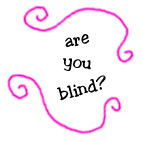 As a reminder to everybody on the road today, here’s a few tips about driving with manners (something a number of people have forgotten about). Please read the following, from a book by William A. Evans titled Everyday Safety. After you’ve done so, please, please be careful and try not to ram into my car. And I promise to be a courteous driver. Thank you.
As a reminder to everybody on the road today, here’s a few tips about driving with manners (something a number of people have forgotten about). Please read the following, from a book by William A. Evans titled Everyday Safety. After you’ve done so, please, please be careful and try not to ram into my car. And I promise to be a courteous driver. Thank you.
1952: Good Manners on the Road
![]() In our social and business relations we are taught to be polite, respectful, and courteous. No salesman can be successful by making his customers angry. No boy or girl can be popular if he or she is rude, overbearing, or discourteous. A young man who is wellbred will stand aside for a lady or another gentlemen to enter a doorway ahead of him. We would not think of stepping in front of another person on the sidewalk if there were any danger of bumping into that person. When we do have a collision, on foot, we apologize; we do not say, ‘What’s your name and address? Are you insured? Couldn’t you see me coming? Why didn’t you signal? Are you blind? Don’t you know how to walk?
In our social and business relations we are taught to be polite, respectful, and courteous. No salesman can be successful by making his customers angry. No boy or girl can be popular if he or she is rude, overbearing, or discourteous. A young man who is wellbred will stand aside for a lady or another gentlemen to enter a doorway ahead of him. We would not think of stepping in front of another person on the sidewalk if there were any danger of bumping into that person. When we do have a collision, on foot, we apologize; we do not say, ‘What’s your name and address? Are you insured? Couldn’t you see me coming? Why didn’t you signal? Are you blind? Don’t you know how to walk?
Isn’t it possible for us to be just as courteous when we are driving as when we are walking? If you think not, what is the reason for your belief? Can’t we hesitate, or slow down, or even stop our cars, if necessary, in order to let another car pass safely? Can’t we stop or reduce our speed in order to give a pedestrian a chance to get out of the way without jumping for his life? Certainly we can do all of these things and more if we are able to control our cars and if we wishto control them. The modern motorcar is very responsive to the driver. With ‘finger tip steering,’ strong, quict-acting brakes, and easy-to-shift transmission gears, there is only one reason why a driver might be discourteous ~ his own carelessness and indifference to the rights and welfare of others. This fault each one of us must be careful to avoid.![]()
Source: Evans, William A. Everyday Safety. Chicago: Lyons and Carnahan, 1952.
~ pp. 241-42 ~